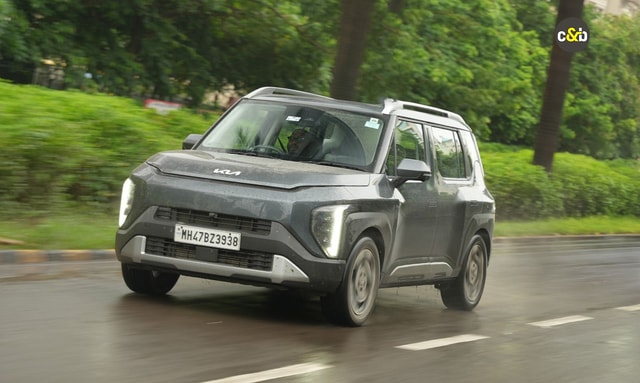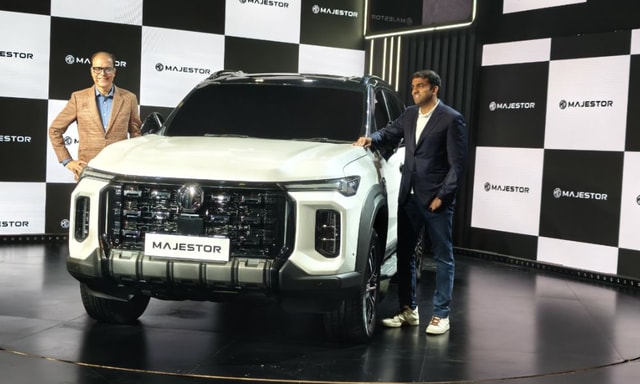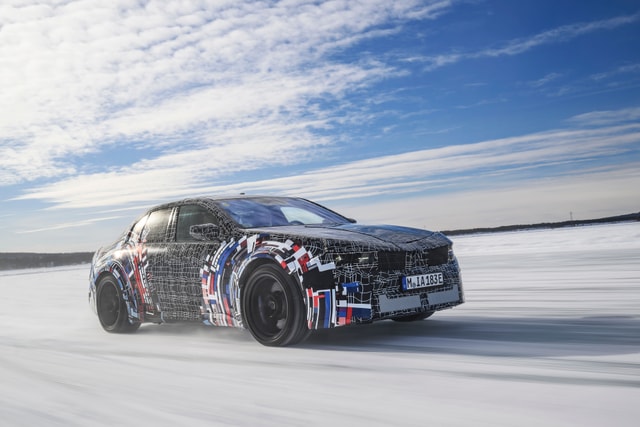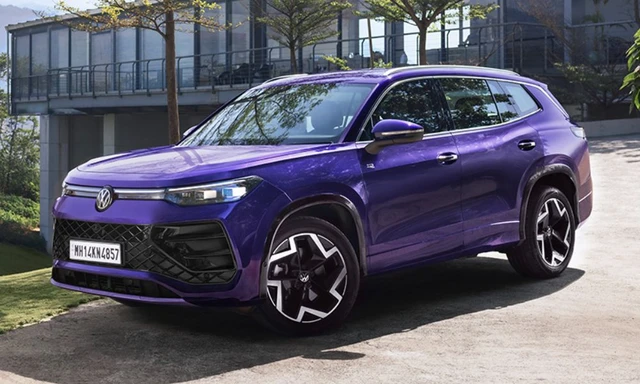Deciphering Electric Vehicle Technology

Electric vehicles (EV) are going to be game-changers in the future of mobility. As such, there still exist questions pertaining to the workings of an EV and how different they are when compared to their ICE siblings. At its most basic, an electric powertrain has three basic elements a) High Power Battery (which is the fuel for propulsion) b) An Electric Motor (which replaces the powertrain) and c) Power Electronics (which controls the flow of power amongst different elements). Just like most consumer electronic devices, EVs are powered by lithium-ion batteries and do run out of charge after a sustained period of time and therefore they require recharging which can be easily accomplished at home or in public.
Also Read: Tata Nexon EV Clocks 2,000 Sales Milestone In Just Over 10 Months
The Nexon EV has been a successful car for Tata Motors
The Life of an Electric vehicle:
Today, most electric vehicles have lithium-ion battery packs. These are similar to the ones that are used in cell phones and laptop computers, only they're much larger and hold a lot more power. The key to understanding the life of your electric vehicle depends on a number of things, for instance - the kind of chemistry you are deploying, the charging cycles one follows, frequency of fast charging, etc.
One of the key reasons for long term battery pack deterioration is the temperature cycles it undergoes. Lithium-ion cells perform best when maintained between 15 to 35 degrees Celsius. A typical cell phone battery works in its prime for about two years, post which its performance starts dropping leading to frequent charging. Unlike cell phones, an electric vehicle has a dedicated battery cooling system that keeps the battery pack temperature within a stable range throughout driving or charging operations, thus enabling a longer life.
Automobile manufacturers give a warranty of a standard 8 years or 1,60,000 km. Since the average vehicle ownership period in India is between 7 to 10 years, practically speaking, the battery pack is under warranty throughout the standard ownership period. Beyond this limit, EVs are still usable, though the customer might see a drop in the range and performance, however, theoretically the life of the vehicle can be significantly extended up to 15-17 years or even more!
The biggest roadblock for prospective EV buyers is not understanding the technology itself
Understanding the Electric vehicle battery:
Buyers who are considering the switch to electric cars, but are struggling to understand the new technology, should first comprehend fundamental facts about batteries before they buy an electric vehicle. An electric vehicle's battery capacity is measured in kilowatt-hours (kWh). In the EV world, kilowatt-hours are to batteries what liters are to petrol/ diesel tanks. Most EVs in India use a lithium-ion battery. A lithium-ion battery is a chemical entity and therefore is sensitive to high temperatures and high charging rates. However, in order to preserve battery efficiency and battery life, the electric vehicle already has multiple levels of checks through the battery management system (BMS) or other strategies to make sure that the car or battery does not experience these kinds of conditions.
The battery of your EV will also have an Ingress Protection (IP) rating which classifies and rates the degree of protection provided by mechanical casings and electrical enclosures against intrusion, dust, accidental contact, and water. A typical IP rating in an electric vehicle could be IP65 or IP67 rating, depending on the vehicle. Here the digits represent their protection against the two elements - dust and water. Thus, the higher the number, the better is the protection against these two elements. Modern-day electric vehicle batteries have an IP67 rating, which allows for the component to be submerged in water up to a metre in height for up to 30 mins without any leakage.
Also Read: Tata Motors Achieves 4 Million Passenger Vehicle Sales Milestone In India
The warranty on the Nexon EV's electric motor is 8 years or 160,000 km, nearly 3x more than a standard ICE vehicle
Understanding the Electric Motor
The high power electric motor used in most electric vehicles is a 3 Phase AC Motor. Electric motors by default have a much superior low-end torque compared to ICE engines and thus provide that initial bump in performance that continues almost throughout the RPM band. Electric motors also happen to operate at much higher efficiency levels of about 90 per cent compared to a typical ICE, which would be executing around 35-4- per cent. Unlike ICE, electric motors do not require any kind of regular upkeep, oil changes, or filter changes and hence this results in a substantially lower ownership cost. In line with the battery type, the warranty on electric motors is 8 years or 160,000 km which is 2.5x to 3x higher than a typical ICE unit.
Understanding Power Electronics
EVs have multiple power electronic components that control the flow of power during charging and driving operations. All these equipment's contain no rotating parts and are fit-for-life, thus again contributing to a lower ownership cost. Additionally, an EV does not have an alternator like an ICE engine, instead there exists a DC-DC convertor which will step down the energy that is available from the main battery and feed it into the auxiliary battery at 12 /13 and a half volts.
The Tata Nexon EV is powered by a 30.2 kWh battery offering a maximum range of over 300 km
Charging your electric vehicle – Do's and Don'ts:
Most electric vehicles can be charged through two ways - Home/AC charging and DC fast charging. Home charging typically, is done through the household 15 Amp point and takes about 8 hours for a complete charge. On the other hand, DC Fast charging requires specialised equipment that is installed in public places and can charge the car in about an hour. (All charging time mentioned are w.r.t to Nexon EV). As a good operating practice, it is usually recommended to engage in one slow charge session every 15 days, this helps your EV battery pack to be 'balanced'.
EV and Changing Altitude and Temperature:
In comparison with an ICE engine there is no major altitude compensation in an EV in terms of performance, life, or from a range perspective. The intelligent battery management system algorithms and on-board dedicated cooling systems ensure that your EV can tackle all ambient temperatures across India. Most critical components such as motor and battery pack are also IP67 enabled, thus protecting against moisture and any dirt entry.
There is an extensive amount of research taking place in the space of EV technology. One of which is in the area of increasing the range through the development of high energy density cells. Furthermore, with EVs, any new battery technology needs to undergo several long field trials to prove itself under real-world driving conditions. Researchers are also looking at the benefits of Aluminum air batteries, solid-state batteries, and the use of alternative materials. While all of the aforementioned are yet to make an entry into the market, there is no doubt that the electric vehicle journey has not only begun but it has already proceeded to disrupt the automobile market.
Latest News
 Seshan Vijayraghvan | Jan 16, 2026Kia Syros Variant Line-Up Expanded With HTK (EX) Trim; Prices Start At Rs. 9.89 LakhPositioned between the HTK (O) and HTK+ trims, the new variant will be offered in both petrol and diesel options.2 mins read
Seshan Vijayraghvan | Jan 16, 2026Kia Syros Variant Line-Up Expanded With HTK (EX) Trim; Prices Start At Rs. 9.89 LakhPositioned between the HTK (O) and HTK+ trims, the new variant will be offered in both petrol and diesel options.2 mins read car&bike Team | Jan 16, 2026MG Majestor India Launch On February 12Unveiled in India at the 2025 Bharat Mobility Expo, the Majestor is expected to be positioned as a more premium alternative to the Gloster.1 min read
car&bike Team | Jan 16, 2026MG Majestor India Launch On February 12Unveiled in India at the 2025 Bharat Mobility Expo, the Majestor is expected to be positioned as a more premium alternative to the Gloster.1 min read Jaiveer Mehra | Jan 15, 2026Kia Carens Clavis Gets New Sunroof-Equipped HTE(EX) Trim; Prices Start From Rs 12.55 LakhNew lower mid-spec trim is positioned between the HTE(O) and HTK variants and gets some additional features.1 min read
Jaiveer Mehra | Jan 15, 2026Kia Carens Clavis Gets New Sunroof-Equipped HTE(EX) Trim; Prices Start From Rs 12.55 LakhNew lower mid-spec trim is positioned between the HTE(O) and HTK variants and gets some additional features.1 min read Seshan Vijayraghvan | Jan 15, 2026All Electric BMW M3 Details Out; Will Offer Simulated Gear Shifts, Synthetic SoundsThe first EV from the high-performance division of BMW will get individual electric motors of all 4 wheels1 min read
Seshan Vijayraghvan | Jan 15, 2026All Electric BMW M3 Details Out; Will Offer Simulated Gear Shifts, Synthetic SoundsThe first EV from the high-performance division of BMW will get individual electric motors of all 4 wheels1 min read Jaiveer Mehra | Jan 15, 2026Volvo EX60 SUV Global Debut On Jan 21; Will Offer 810 km RangeNew GLC EV rival will be the first Volvo to use the next-gen SPA3 platform and support 400 kW fast charging.1 min read
Jaiveer Mehra | Jan 15, 2026Volvo EX60 SUV Global Debut On Jan 21; Will Offer 810 km RangeNew GLC EV rival will be the first Volvo to use the next-gen SPA3 platform and support 400 kW fast charging.1 min read Jaiveer Mehra | Jan 15, 2026India-Spec Volkswagen Tayron RevealedThree-row SUV will be offered in the R-Line trim with features like 19-inch wheels, a 15-inch touchscreen, front seats with ventilation & massage function and more.1 min read
Jaiveer Mehra | Jan 15, 2026India-Spec Volkswagen Tayron RevealedThree-row SUV will be offered in the R-Line trim with features like 19-inch wheels, a 15-inch touchscreen, front seats with ventilation & massage function and more.1 min read
 Bilal Firfiray | Jan 9, 2026Toyota Urban Cruiser Hyryder: 10,000 km Long-Term ReviewAfter spending over three months and 10,000 km with the Toyota Urban Cruiser Hyryder Hybrid, we were impressed by its real-world mileage, seamless hybrid, practical comfort, and Toyota reliability. Is it the best C-SUV then?5 mins read
Bilal Firfiray | Jan 9, 2026Toyota Urban Cruiser Hyryder: 10,000 km Long-Term ReviewAfter spending over three months and 10,000 km with the Toyota Urban Cruiser Hyryder Hybrid, we were impressed by its real-world mileage, seamless hybrid, practical comfort, and Toyota reliability. Is it the best C-SUV then?5 mins read Seshan Vijayraghvan | Jan 8, 20262026 Mahindra XUV 7XO Review: Big On Tech, Bigger On ComfortThe new Mahindra XUV 7XO is flashier, feature packed, and comes with more advanced tech. But are the changes just incremental or actually substantial?1 min read
Seshan Vijayraghvan | Jan 8, 20262026 Mahindra XUV 7XO Review: Big On Tech, Bigger On ComfortThe new Mahindra XUV 7XO is flashier, feature packed, and comes with more advanced tech. But are the changes just incremental or actually substantial?1 min read Preetam Bora | Jan 10, 2026Simple One Gen 2 First Ride Review: 265 km Claimed Range!The Gen 2 model of Simple Energy’s first electric scooter gets a fair few updates, including new features, tech, more range and lighter weight. We spent a couple of hours with the Simple One Gen 2 to find out if it manages to impress.6 mins read
Preetam Bora | Jan 10, 2026Simple One Gen 2 First Ride Review: 265 km Claimed Range!The Gen 2 model of Simple Energy’s first electric scooter gets a fair few updates, including new features, tech, more range and lighter weight. We spent a couple of hours with the Simple One Gen 2 to find out if it manages to impress.6 mins read Amaan Ahmed | Jan 3, 2026VLF Mobster 135 300 KM Review: Fun But FlawedA 125 cc scooter with Italian design and Chinese genes is a rare combination, and while some may be tempted to dismiss it because of its origins, the VLF Mobster shows 125s can also be exciting – but not without compromises.11 mins read
Amaan Ahmed | Jan 3, 2026VLF Mobster 135 300 KM Review: Fun But FlawedA 125 cc scooter with Italian design and Chinese genes is a rare combination, and while some may be tempted to dismiss it because of its origins, the VLF Mobster shows 125s can also be exciting – but not without compromises.11 mins read Preetam Bora | Dec 30, 2025TVS Orbiter Review: Real-World Performance and Range TestedThe TVS Orbiter is a promising electric scooter promising decent range, practicality and pricing. But is there any reason to avoid it? We spent a few days getting to know it better.9 mins read
Preetam Bora | Dec 30, 2025TVS Orbiter Review: Real-World Performance and Range TestedThe TVS Orbiter is a promising electric scooter promising decent range, practicality and pricing. But is there any reason to avoid it? We spent a few days getting to know it better.9 mins read




































































































































